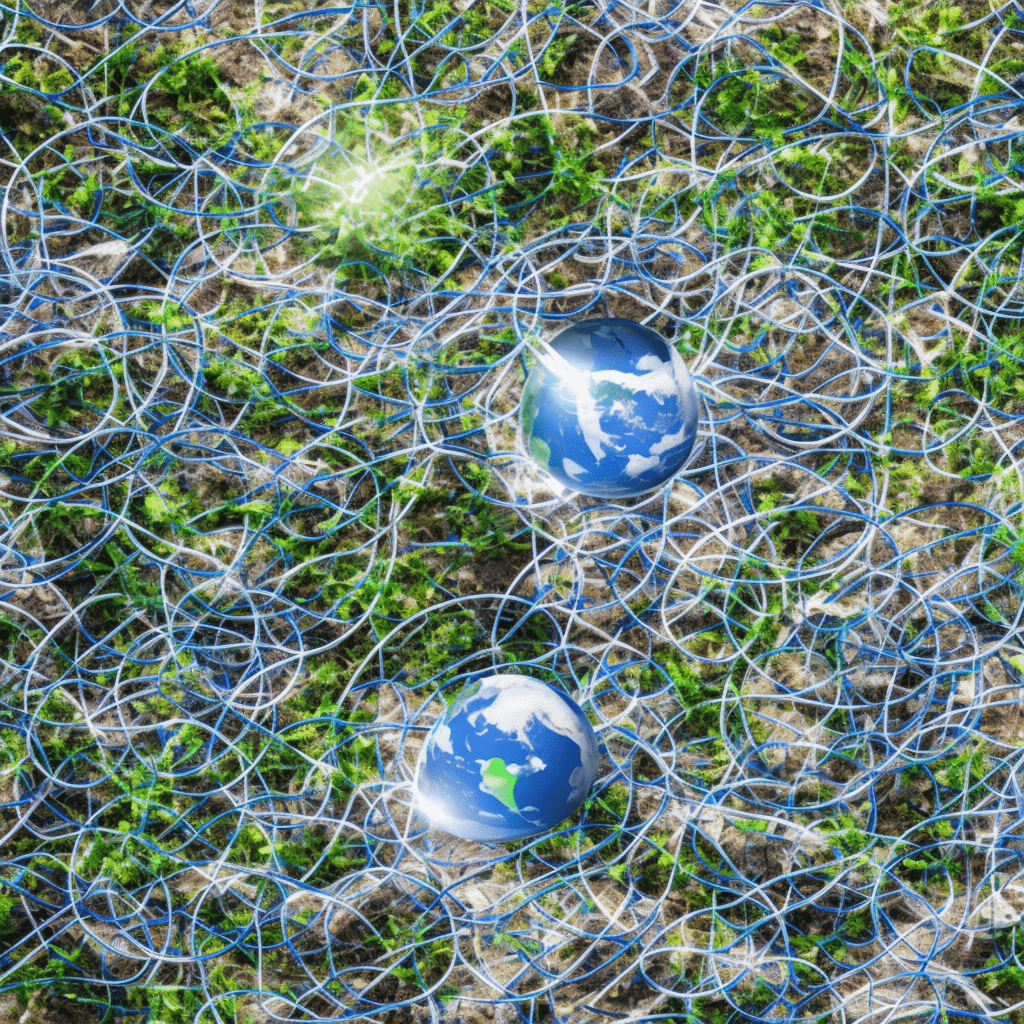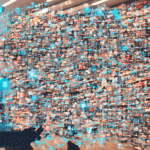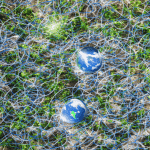In the recent era of rapid technological advancements, the traditional linear economy has shown its shortcomings, particularly in the areas of sustainability and resource management. In response, a new model, the circular economy, is emerging as a viable alternative, promising a more sustainable and regenerative approach to economic growth. But how does technology fit into this new paradigm, and how can it aid in the transition towards a circular economy? Let’s dive in and explore.
The Core Concept: Understanding Circular Economy
Before we delve into the role of technology, it’s crucial to understand the fundamentals of a circular economy. Unlike the traditional linear economy, which follows a ‘take-make-dispose’ model, a circular economy operates on the principles of designing out waste, keeping products and materials in use, and regenerating natural systems.
A découvrir également : What Innovations Are Driving the Evolution of Smart Wearables Beyond Fitness Tracking?
In a circular economy, the aim is to extend the life cycle of products, reduce waste, and promote the reuse and recycling of materials. This model not only has significant potential to mitigate the environmental impacts of our consumption habits but also offers numerous economic benefits, including cost savings, job creation, and innovation opportunities.
The Role of Technology in the Circular Economy
Technology has the potential to act as a crucial enabler in the transition towards a circular economy. Here, we’ll discuss the different ways in which technology can support this shift.
A lire également : How Are Augmented Reality and AI Transforming the Retail Customer Experience?
Digital Technology: The Information Exchange Catalyst
In a circular economy, the exchange of information is fundamental. From the design phase to the end of a product’s life cycle, information exchange plays a vital role in ensuring that materials and resources are used efficiently.
Digital technologies, such as the Internet of Things (IoT), blockchain, and Artificial Intelligence (AI), can facilitate this exchange of information. For instance, IoT devices can monitor the usage and condition of products, providing valuable data that can be used to extend product lifecycles or plan for their end-of-life stage. Similarly, AI can analyze vast amounts of data to identify patterns and opportunities to optimize resource usage.
Green Technology: Aiding in Resource Efficiency
Green technologies, such as renewable energy systems, energy-efficient devices, and bio-based materials, can also contribute significantly to the implementation of circular economy models.
By reducing the dependence on finite resources, these technologies can help to close the resource loop and establish a more sustainable economy. For instance, renewable energy systems can help to decarbonize our energy supply, while bio-based materials can provide sustainable alternatives to non-renewable resources.
Advanced Manufacturing: Turning Waste into Wealth
Another area where technology can support the circular economy is advanced manufacturing. Techniques such as 3D printing, robotics, and nanotechnology can turn waste into valuable resources, contributing to a more closed-loop economy.
For example, 3D printing can utilize recycled materials to produce new products, reducing the need for virgin materials. Meanwhile, robots can be used in waste sorting and recycling processes, improving efficiency and accuracy.
Overcoming Challenges: The Role of Technology in Facilitating the Transition
While the transition to a circular economy offers numerous benefits, it also presents several challenges. Let’s look at how technology can help overcome these obstacles.
Data Management and Infrastructure
One of the key challenges in transitioning to a circular economy is the need for effective data management and infrastructure. This is where digital technology can provide solutions.
Digital platforms and cloud computing can facilitate the collection, storage, and analysis of data, supporting business decision-making and driving innovation. Additionally, blockchain technology can ensure the integrity and transparency of the data, promoting trust and collaboration among stakeholders.
Policy and Regulatory Framework
Another challenge is the need for an appropriate policy and regulatory framework. A supportive policy environment is crucial in enabling the transition to a circular economy.
Technology can play a role here as well, by providing tools to monitor and evaluate the implementation of circular economy strategies. For instance, AI can be used for predictive analysis and scenario planning, informing policy decisions and helping to establish effective regulations.
In summary, technology offers a multitude of ways to support the transition to a circular economy, from facilitating information exchange and resource efficiency, to aiding in the management of data and policy development. While the road to a circular economy may be long and challenging, the potential benefits in terms of sustainability, economic growth, and societal wellbeing make the journey well worth it. Remember, with every challenge comes an opportunity; technology can be our powerful ally in this transformative journey.
The Crucial Influence of Big Data and AI in Circular Economy Models
In the world of a circular economy, big data and Artificial Intelligence (AI) hold enormous potential in driving sustainable transformations. These synergistic technologies can leverage vast amounts of data to optimize resource use, improve product design and bolster efficient supply chains, all of which are pivotal aspects of the circular economy.
Big data analysis can provide deep insights into product lifecycle and consumption patterns. By coupling this with machine learning algorithms, businesses can predict product lifespans and strategize for efficient reuse, repair, and recycling initiatives. This approach not only reduces waste but also helps in designing products that have a longer lifespan or are easier to recycle.
Diving further into the realm of AI, we encounter an exciting concept known as Digital Twins. In essence, a digital twin is a cyber-physical system, a virtual model of a process, product or service. In a circular economy setting, they can provide real-time monitoring and operational data, enabling predictive maintenance and pre-emptive resource management.
For instance, digital twin technology can be integrated into supply chain processes to optimize resource utilization. They can provide a detailed, real-time view of the entire supply chain, helping to identify bottlenecks or areas where resources can be used more efficiently. By addressing these aspects, businesses can significantly reduce waste and enhance overall productivity, thus making strides towards embracing circular economy principles.
The Power of Additive Manufacturing and Cyber-Physical Systems in Circular Economy
Additive manufacturing, more commonly known as 3D printing, is another technology that can significantly bolster the transition to a circular economy. This novel manufacturing method can use recycled materials to print products designed for longevity and recyclability, thus embodying the circular economy’s principles of resource optimization and waste minimization.
Apart from that, 3D printing, as a cyber-physical system, can also facilitate localized production, reducing the need for extensive transportation and the associated carbon emissions. With the aid of AI, it is even possible to automate the recycling process, segregating waste effectively for re-manufacturing.
The intersection of digital technologies with circular business models creates a realm of untapped potential. Companies can utilize cloud computing for real-time data sharing across the supply chain, ensuring optimal resource utilization. Moreover, with the help of technologies like blockchain and AI, businesses can effectively monitor and manage the product lifecycle, ensuring end-to-end sustainability.
Conclusion: The Future of Technology in Circular Economy Models
In conclusion, there is no denying that technology is an integral part of the transition to a circular economy. From big data to AI, digital twins, and additive manufacturing, these digital innovations are not only paving the way for a more sustainable future but are also reshaping our understanding of economic growth and resource management.
As we move forward, the need for innovation will continue to grow. Success in implementing circular economy models will depend on our ability to harness these technologies effectively. However, it’s also crucial that the deployment of technology is guided by a strong policy and regulatory framework to ensure trust, transparency, and fairness in the digital transformation process.
Remember, the circular economy is about more than just sustainability; it’s about creating an economic system that works long term. As we continue our journey towards this new paradigm, technology will undoubtedly be our most powerful ally, driving us towards a future where growth and sustainability can coexist in harmony. Take a look at the many scholarly resources available on Google Scholar or preprints.org, and you’ll find a wealth of research on this fascinating intersection of technology and circular economy. By clicking on the link EMF or opening a new tab, you can dive deeper into this transformative journey.










